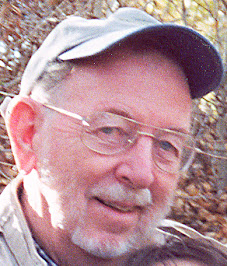 I announced at the beginning of this bloggery that it would be
to a large extent about “dirt” – that is, “what food is and where it comes
from.” In this installment, I want to come back to that subject. In my usual
round about way. First, an anecdote from John Muir.
I announced at the beginning of this bloggery that it would be
to a large extent about “dirt” – that is, “what food is and where it comes
from.” In this installment, I want to come back to that subject. In my usual
round about way. First, an anecdote from John Muir.
In the spring of 1867, Muir began A Thousand Mile Walk to the Gulf, setting out from his home in
Indiana. In the book of that title, Muir reports from the Cumberland Mountains
of Tennessee, “This is the most primitive country I have seen, primitive in
everything. The remotest hidden parts of Wisconsin are far in advance of the
mountain regions of Tennessee and North Carolina. But my host speaks of the ‘old-fashioned
unenlightened times,’ like a philosopher in the best light of civilization. I
believe in Providence, said he. Our
fathers came into these valleys, got the richest of them, and skimmed off the
cream of the soil. The worn-out ground won’t yield no roastin’ ears now. But
the Lord foresaw this state of affairs, and prepared something else for us. And
what is it? Why, He meant us to bust open these copper mines and gold mines, so
that we may have money to buy the corn we cannot raise.“
Muir’s ironic comment: “A most profound observation.”
About this story, two things. First, the acknowledgement
that food comes from topsoil. Second, early evidence of the tendency in
American culture to deny or ignore the fundamental importance of that First
Fact of Food in the belief that money (aka Providence) can provide anything we
need.
Indeed, the commercialization and industrialization of food
in America has provided a marvelously bountiful and cheap food supply. But too
much of it processed in the form of what Michael Pollan calls “food-like
substances.” So we are the best-fed and most obese population on the planet.
Moreover, even before processing, the nutritional quality of commercial,
non-organic fruits and vegetables in the U.S. has steadily declined over the
last 50 or so years. See “Still No Free
Lunch: Nutrient Levels in U.S. Food Supply Eroded by Pursuit of High Yields,”
at https://www.organic-center.org/reportfiles/YieldsExecSummary.pdf.
This is not to say we should be trying to do without money
or markets. But there are two kinds of food markets. At a farmer’s market (or a
farm) the price or cost of food matters, but there are no middle-men,
processors, distributors etc involved, and the taste and nutritional quality of
the food are likely to be more important factors. If the food leaves the farm
to go on the commodity market, on the other hand, it is essentially converted
into money, its appearance or marketability, including shelf life, being valued
above its taste or nutritional quality.
Note that this is true even when the farm produce goes to a
regional wholesale market, where much of it is purchased by local businesses usually
called curb markets but often calling themselves “farmers markets.” And true of
food produced in contract arrangements with large-scale distributors or
supermarket chains.
Getting back to First Facts, food comes from topsoil, and
what food is is carbon. In various combinations with 30 or more other important
elements, but still, mostly carbon. As are our bodies and other living
organisms, plant or animal. As they grow, plants take carbon (as CO2) out of
the air to build their bodies. But the soil is also a rich store of carbon
(again in combination with other elements), providing the habitat in which the
microflora and microfauna work to make the soil fertile. See https://www.leaf.tv/articles/carbon-based-foods-that-humans-eat/
Does it matter? Well, it took all of human history to about
1800 for global population to reach one billion. The fossil fuels have been
major contributors to a human population explosion since then. We are now
approaching 8 billion. And we are hooked on fossil-fueled food. How much longer will we be able to get our oil/food fix? Consider this chart showing oil discoveries since the last major oil-field discovery, Ghawar in Saudi Arabia. .
How does your garden grow?




No comments:
Post a Comment